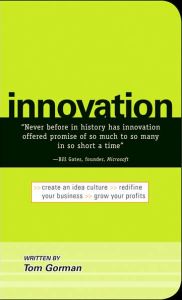Join getAbstract to access the summary!

Join getAbstract to access the summary!
Tom Gorman
Innovation
Create an Idea Culture, Redefine Your Business, Grow Your Profits.
Adams Media, 2007
What's inside?
With products appearing, changing and disappearing faster than ever, only the innovative will survive.
Recommendation
“Innovation” is a hot buzzword that’s generated a lot of confusion. Early on, Tom Gorman emphasizes that he, for one, does not limit his definition of innovation to revolutionary change, nor to the fundamental transformation of a product. Instead, he defines innovation as any “product, service or process” that springs from a new idea. Innovation, he says, can be a matter of marketing or packaging. He has no new theories, nor even many new tips – but he provides a clear, extremely accessible introduction to the innovation process, demystifying it so you’ll feel almost irresistibly drawn to take part in it. With its definitions of key words and breakdown of complex realities into manageable stages and diagrams, Gorman’s book is a good beginner’s guide; and his integration of multiple models and all divisions of an organization may give even experienced innovators additional tools. getAbstract suggests that you stick this bright little manual into your back pocket, and get to work.
Summary
About the Author
Tom Gorman has an M.B.A. from New York University, and has written or co-written more than 15 business books.


















Comment on this summary